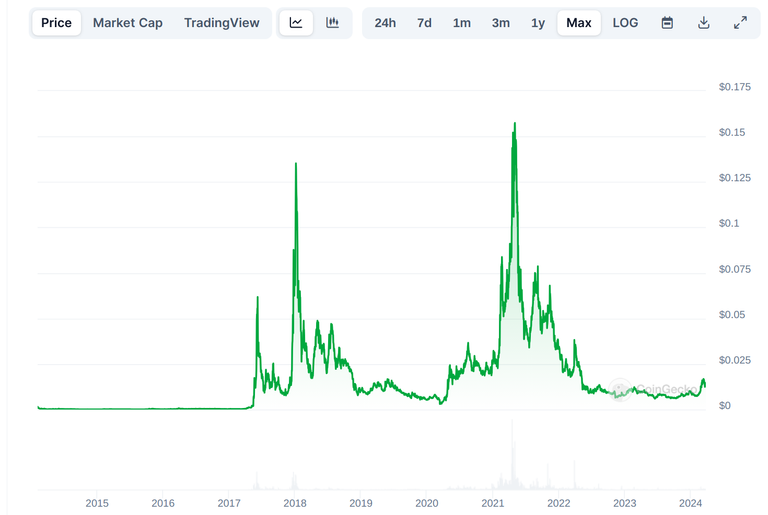With over 13,000 cryptocurrencies now listed on CoinGecko, you probably feel overwhelmed when it comes to the process of distilling the good projects from the bad. The truth is that there are a lot of low-value crypto scams out there, trying to take advantage of you. But don't let that blind you from the fact that there are plenty of legitimate projects, with significant long-term potential.
Filtering out the good from the bad is not a simple process, and requires a lot of research and experience. That said, in this article, we are going to cover five critical aspects of any cryptocurrency project you should consider before adding it to your portfolio.
1. Passionate And Dedicated Founders
For a cryptocurrency project to achieve long-term success, it needs to be decentralized and run by the community. That said, we also need to recognize that a crypto project needs a passionate and dedicated founder(s) to get off the ground.
Take Bitcoin, for example. Founder Satoshi Nakamoko wasn't in it to get rich (after all, he hasn't spent any of the 1 million Bitcoins he mined). Rather, he was passionate and dedicated to engineering a new form of money that could be exchanged peer-to-peer, without the need of an intermediary. The same could be said of the co-founders of Ethereum, who were inspired by the technology and the impact it could have on society.

So before investing a large sum of money, we should identify the founders of a project. Anonymous or not, we can examine their writings and interviews to see if they are indeed seeking to disrupt the status quo in traditional finance (TradFi) by building an alternative system. On the flip side, a red flag would be if they are talking about how much their coin/token will be worth in the future, or that they'll eventually be ranked in the top 10 of cryptocurrencies.
The best scenario would be that the founders have been involved in crypto since its early years (2009-2015) and preferably got involved during a bear market, instead of during a bull run. This would be a clear sign that the founders really care about the technology behind Bitcoin, instead of just making a quick buck to retire in the fiat world.
2. Innovative Engineering
We cannot deny that many of the 13,000+ projects listed on Coingecko are simply copycat projects, riding on the coat tails of true innovators.
So it's important for us to consider, is the team doing something innovative compared to all the other projects? For example, have they come up with a new solution to push forward scalability, or have they figured out a new way to harness zero knowledge proofs to facilitate off-chain transactions?
A project like MultiversX (formerly Elrond) for example, has implemented a unique sharding algorithm to enable on-chain scaling, as opposed to the layer 2 solutions that Ethereum is focused on. We could also look at a project like Alephium that has implemented Bitcoin's UTXO model to increase the security of smart contracts.
3. A Long Track Record
Aside from Bitcoin and Ethereum, there are still a few cryptocurrencies that have been around for over a decade and have dedicated communities that are proud of their work. Digibyte, Dash, and Decred come to mind. A group that has remained committed throughout multiple bull/bear cycles is a good sign that they are likely going to be around for the long-run.
You can figure out how long a cryptocurrency project has been in development by checking the coin's Max price history on a site like CoinGecko or Coinmarketcap. Although some projects have been in development for much longer than they've been on the market, this is a general indicator of how long a cryptocurrency has been worked on relative to others.

4. Strong and Positive Community
A cryptocurrency has very little value without its community, so keeping everyone optimistic and engaged is of the utmost importance in the world of decentralized finance.
We should be checking if real people are responding to the project's social media posts, or is it just a bunch of paid bots posting generic replies? What is the overall sentiment when you join the project's Discord or Telegram channel? Is the community feeling good overall about the project, or are they complaining about the team and their decisions? Of course, there will always be a few Negative Nancy's hanging around, but significant negative energy can cause a project to spiral downwards quickly.
5. Actively Growing
Are you constantly challenging yourself to grow, or getting stuck in complacency? Well, the same concept applies to cryptocurrency projects - they are either growing, or dying.
Twitter/X is a great resource you can use to find out if a project is progressing well, or in decline. Here you will find charts illustrating how the number of active users, transactions, total value locked, merchant adoption, etc is increasing or in decline for a specific project. Some accounts worth following on Twitter for the "alpha" (info) include House of Chimera, and Messari.
Do Your Best
At the end of the day, it's not an easy process to distinguish between the good and the bad here in crypto land, but as with anything in life, you will get better with education, experimentation, and experience. In this article we covered 5 critical aspects you should consider before adding a cryptocurrency to your portfolio.
Keep in mind that just because you do your own research (DYOR) and carefully select a crypto project does not mean that it won't fail miserably. At this early stage of the game crypto is still in the wild wild west, but you don't need to take on a huge amount of risk to see significant returns in the future.
By the way, if you do not have the time to sift through all these different crypto projects, be sure to follow me here on HIVE where I write about both finance and crypto. You can also follow me on InLeo for more frequent updates.
Until next time...
Resources
Satoshi Nakamoto Image [1]
Digibyte MAX price chart [2]
Messari Crypto Research [3]